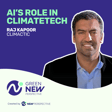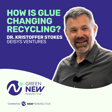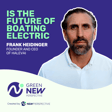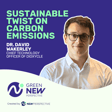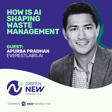
Turning The Tide on Water Waste With AI: Podcast With Shayp
Wastewater in urban buildings not only signifies financial loss but also represents a considerable environmental challenge, with an astonishing 70% of distributed freshwater being lost primarily through leaks and misuse. This results in roughly 20% of water bills covering water that never gets used—essentially money down the drain.
Addressing these inefficiencies, Shayp, led by co-founder Grégoire de Hemptinne, employs advanced technology to combat unnecessary water loss effectively.
In this podcast episode, we talk to Grégoire about how Shayp's innovative solutions are designed to track and reduce this wastage, making a big splash across various real estate sectors.
📚 RESOURCES & LINKS
========================
- Website: https://www.shayp.com/
- LinkedIn: https://www.linkedin.com/company/shayp
- Facebook: https://www.facebook.com/shaypwater
🌍 SUSTAINABILITY PODCAST CREATED BY NEW PERSPECTIVE
========================
This podcast is proudly sponsored by New Perspective Marketing, a dynamic growth marketing agency in Boston, MA, celebrating 20 years in business. We help sustainably focused B2B organizations grow their brands and scale up revenue. If you or your organization is looking to grow, visit npws.com for more info.
🎧 SUBSCRIBE TO OUR PODCAST
===========================
- Spotify: https://bit.ly/3PSWIyI
- Apple Podcasts: https://bit.ly/3RvlHte
- Youtube: https://bit.ly/3RDzkXg
- Deezer: https://bit.ly/3PvQaof
- Amazon Music: https://bit.ly/3PQlijS
- Zencastr: https://bit.ly/48xt75s
💬 FOLLOW US ON SOCIAL MEDIA
============================
- Instagram: https://www.instagram.com/greennewperspective/
- Twitter: https://twitter.com/gnperspective
- LinkedIn: https://www.linkedin.com/company/new-perspective-marketing/
- Facebook: https://www.facebook.com/greennewperspective
- TikTok: https://www.tiktok.com/@greennewperspective
Host: Dunja Jovanovic
Executive Producer: Marko Bodiroza
Creator: Nathan Harris



